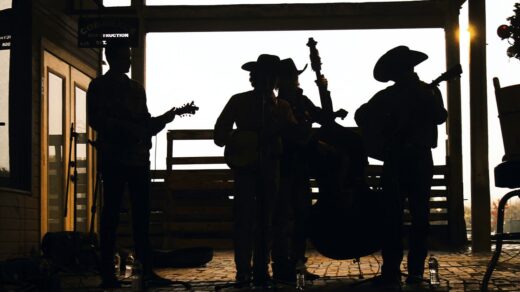Let’s finally talk about popular genres. If in the “difficult” genres the question is: how to perceive it, then the mass genres also have their own communication problems. Related to the difficulties of translation, ambiguities of terminology that everyone understands as they want, and the like. Today’s post is about the mishap of the “three-letter style”-that is, fashionable armbi.
Mainstream style.
In this century, R&B (Rhythm and blues, R’n’B or RnB) is in its heyday. A dozen years ago, it was thought that R&B is a purely American product, no one but the Americans do not need. And in general, it was an imitation of real music.
But the persistence of the producers nevertheless gave its fruit – lately R&B has really become “the main genre of mass song”. This style turns out to be quite full-fledged and productive – at least because there are more and more colored guys and girls with real voices, talent and energy. But it does seem sometimes that the term R&B now refers to anything. How right is that?
Some conspiracy theorists see the rise of R&B as a result of a conspiracy of producers, record labels, globalists and who knows what else. The new fashion generates sincere enthusiasm of some and deaf irritation of others. It’s a style that’s irritatingly hyper-emotional, vocal, melodic and downright hedonistic.
Some educated people (and music journalists) are especially irritated by the word itself, a real three-letter swear word. R&B is rhythm and blues! Heck, we remember – it’s someone from the old rock ‘n’ rollers, almost Chuck Berry. And now some mulattoes in fur coats…
A total reassessment of values! What is the world coming to, – nervously asked normal people (and even music journalists). But no one – and music journalists even less so – has yet bothered to answer the question of where this lost link really is?
If you tell anyone today that great rock ‘n’ roll is just “simplified R&B,” they’ll get the wrong idea. Even though it’s essentially like that: the root is the same, the trunks are different.
Nowadays, the term “rock ‘n’ roll” refers to any driving guitar music. The same thing happened with rhythm and blues: the genre was so influential and widespread that almost all postwar popular music can be defined by this term. It has long evolved and in different decades looked different.
Rhythm and blues rose to unprecedented heights after… its own demise. And the case was this. A significant catalyst in the process of popularizing the genre was the Atlantic label. It was in its depths that rhythm and blues was finally formed as a style, and important names were forever engraved on the Atlantic’s tablets.
Among the heroes of the style are names that only a die-hard fan and collector knows today. But you can’t ignore musicians like Clyde McPhatter and Chuck Willis. The work of these artists approaches the importance of Ray Charles – they, too, did a lot of work on the soul-nive that had already become a classic by the beginning of the 70s.
Or, for example, Percy Sledge, the singer-songwriter of “When A Man Loves A Woman. In 1966 this song, known to us through the interpretation of Simon & Garfunkel or Michael Bolton, Sledge became the first song of the Southern soul that reached the first (!) place of the pop charts.
And it almost happened by accident. Sledge sang in The Esquires Combo, and began his solo career at the instigation of a local disc jockey named Quin Ivy. Quin Ivey didn’t just give advice for nothing – he dreamt of being a producer himself and was looking for a mentee as green as himself. He did manage to get Sledge to record a few songs.
Why is the “soul” style associated with the Motown label?
Soul and R&B didn’t just exist in the South, of course. For example, there was the still famous Chess label in Chicago. The legendary Curtis Mayfield (better known to us, again, through the vulgar mainstream version of the Rod Stewart-Jeff Beck tandem), the author of the stunningly moving and wise religious song “People Get Ready”, recorded there.










